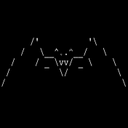Camp 2007 - 1.01
Chaos Communication Camp 2007
To infinity and beyond
| Speakers | |
|---|---|

|
Elektra Wagenrad |

|
Axel Neumann |

|
Marek |
| Schedule | |
|---|---|
| Day | 4 |
| Room | Shelter Foo |
| Start time | 12:30 |
| Duration | 01:00 |
| Info | |
| ID | 2039 |
| Event type | Lecture |
| Track | Science |
| Language | English |
| Feedback | |
|---|---|
|
Did you attend this event? Give Feedback |
B.A.T.M.A.N. - Better Approach to Mobile Ad-Hoc Networking
New routing algorithm and daemon for wireless community networks

B.A.T.M.A.N. is a new routing algorithm developed by the Freifunk community. It is a simple and robust algorithm for establishing multi-hop routes in mobile ad-hoc networks. It ensures highly adaptive and loop-free routing while causing only low processing and traffic cost.
B.A.T.M.A.N
BETTER APPROACH TO MOBILE AD-HOC NETWORKING
B.A.T.M.A.N. is a new routing algorithm developed by the Freifunk community. It is a simple and robust algorithm for establishing multi-hop routes in mobile ad-hoc networks. It ensures highly adaptive and loop-free routing while causing only low processing and traffic cost.
The described performance properties are not just assumptions based on theory or MANET simulations - the new algorithm has already been implemented for GNU/Linux and is now in use in Freifunk mesh networks in real life. We offer a performance optimised routing daemon for routing on Layer 3 of the OSI-model as well as a new daemon (batman-advanced) that routes on Layer 2. Check out the source code and documentation at http://open-mesh.net/batman .
B.A.T.M.A.N. is a routing protocol that is proactive in the sense that it
pro actively populates the routing table of each each mesh node without
calculating topology graphs. It is hard to classify the algorithm -
some people say 'it is clearly proactive', some think 'ah, yes this is a
pheromone (ant-based) algorithm', others think it is a distance vector protocol.
We recommend to watch our presentation and build your own opinion...
B.A.T.M.A.N. is neither calculating nor searching routes unlike many famous
proactive or reactive routing protocols. The algorithm is designed for
wireless networks where the view of the topology is always fuzzy and
constantly changing.
Routing decisions are made based on the existence of information rather than
on the content of information sent by other nodes in the mesh.
Basically the algorithm is flooding the mesh with Originator messages
(quite similar to Hello messages in other protocols) according to
certain rules.
The rules are designed for two objectives. Effectively controlling the originator-message propagation in the mesh and enabling loop-free route detection based on the reception of such originator messages from other nodes.
Freifunk is using B.A.T.M.A.N. now on Layer 3 parallel to Freifunk-OLSR to
compare the performance. The results are very good and the implementation
has just passed testing under tough conditions. So we are ready now for
large scale deployments. It is likely that B.A.T.M.A.N. will replace
Freifunk-OLSR in the near future. We created with B.A.T.M.A.N. a serious
competition to our last routing algorithm Freifunk-OLSR. The same community
that improved OLSR RFC3626 to Freifunk-OLSR is now working on the
ideas and the development of B.A.T.M.A.N.
B.A.T.M.A.N is building routes very fast and the response to changes is quicker compared to Freifunk-OLSR
- it doesn't calculate gigantic topology-graphs
- it doesn't need to synchronise topology informations
- we are confident the algorithm is loop free and did not experience any loops or 'count to infinity' problems in practise
- routing tables contain proactively all stations that are reachable without the overhead of traditional proactive routing protocols
- a single, central server collects topology information from all
nodes for 2D or 3D topology visualisation software routing tables are build organically i.e. routing entries are not endlessly passed on. they appear only if they are available
B.A.T.M.A.N connects to gateways via UDP-tunnels
gateway clients can select their gateway
- gateways are considered according to their speed and availability
- gateway clients can switch a gateway if it appears to be a black hole
- no more gateway switching as long as the gateway is available,
i.e.
VOIP, SSH, Chat connections are stable
B.A.T.M.A.N generates less protocol overhead than OLSR
cu there Axel, Elektra, Marek
